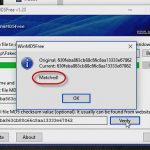How to make PowerShell the default console for Windows Server Core
How to make PowerShell the default console for Windows Server Core
In a previous blog I demonstrated how to autologon a windows server using PowerShell. (You should read that one first). On Windows Server Core I prefer to have PowerShell as the default console instead of the command prompt. There is an Old-Skool way of changing this that still works today.
The registry key “HKLM\SOFTWARE\Microsoft\Windows NT\CurrentVersion\Winlogon” contains a key named “Shell”. The default for this Explorer.exe and this launches the old command prompt. If you change this to PowerShell, then when Core launches, PowerShell will be your default.
There is no security issue with this as in the last blog regarding AutoLogon, so you can safely do this in production. As a side note, my setup script for my lab environments perform both tasks, AutoLogon and making PowerShell the default. For my production servers I just only perform the PowerShell default task. You can do it standing at a single server and to multiple computers using PowerShell Remoting.
Single Server
PS C:\> Set-ItemProperty -Path 'HKLM:\SOFTWARE\Microsoft\Windows NT\CurrentVersion\Winlogon' -name Shell -Value 'PowerShell.exe -noExit'
Multiple servers using PowerShell Remoting
PS C:\> Invoke-Command -ComputerName S1, S2 -ScriptBlock { Set-ItemProperty -Path 'HKLM:\SOFTWARE\Microsoft\Windows NT\CurrentVersion\Winlogon' -name Shell -Value 'PowerShell.exe -noExit'}
Enjoy!
Knowledge is PowerShell,
Jason Helmick
Director of PowerShell Technologies
Interface Technical Training
You May Also Like
AutoLogon, Powershell, Remoting, Shell, Windows Server, Windows Server Core
A Simple Introduction to Cisco CML2
0 3896 0Mark Jacob, Cisco Instructor, presents an introduction to Cisco Modeling Labs 2.0 or CML2.0, an upgrade to Cisco’s VIRL Personal Edition. Mark demonstrates Terminal Emulator access to console, as well as console access from within the CML2.0 product. Hello, I’m Mark Jacob, a Cisco Instructor and Network Instructor at Interface Technical Training. I’ve been using … Continue reading A Simple Introduction to Cisco CML2
Creating Dynamic DNS in Network Environments
0 642 1This content is from our CompTIA Network + Video Certification Training Course. Start training today! In this video, CompTIA Network + instructor Rick Trader teaches how to create Dynamic DNS zones in Network Environments. Video Transcription: Now that we’ve installed DNS, we’ve created our DNS zones, the next step is now, how do we produce those … Continue reading Creating Dynamic DNS in Network Environments
Cable Testers and How to Use them in Network Environments
0 727 1This content is from our CompTIA Network + Video Certification Training Course. Start training today! In this video, CompTIA Network + instructor Rick Trader demonstrates how to use cable testers in network environments. Let’s look at some tools that we can use to test our different cables in our environment. Cable Testers Properly Wired Connectivity … Continue reading Cable Testers and How to Use them in Network Environments




